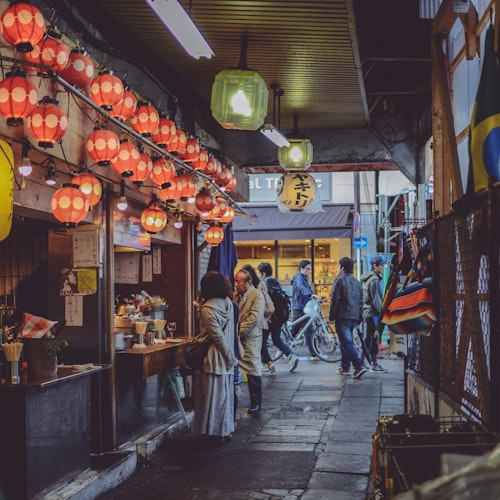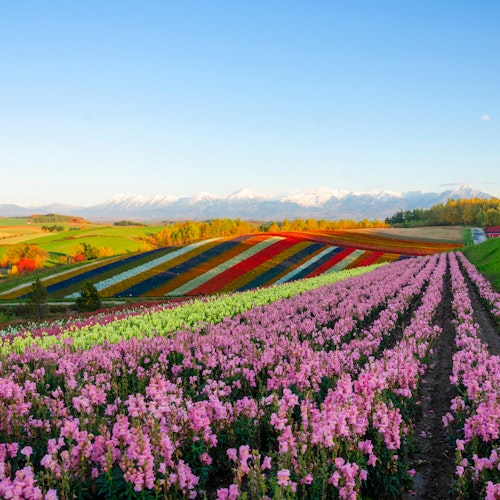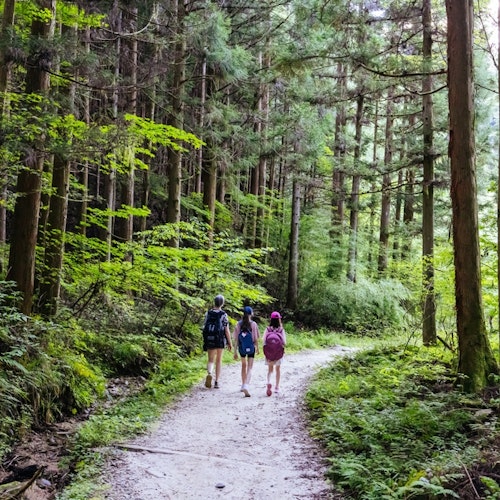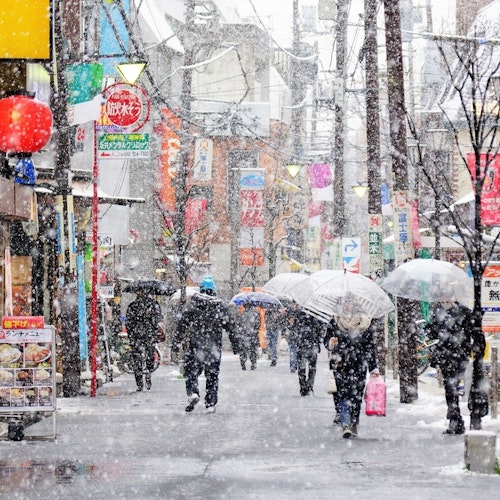
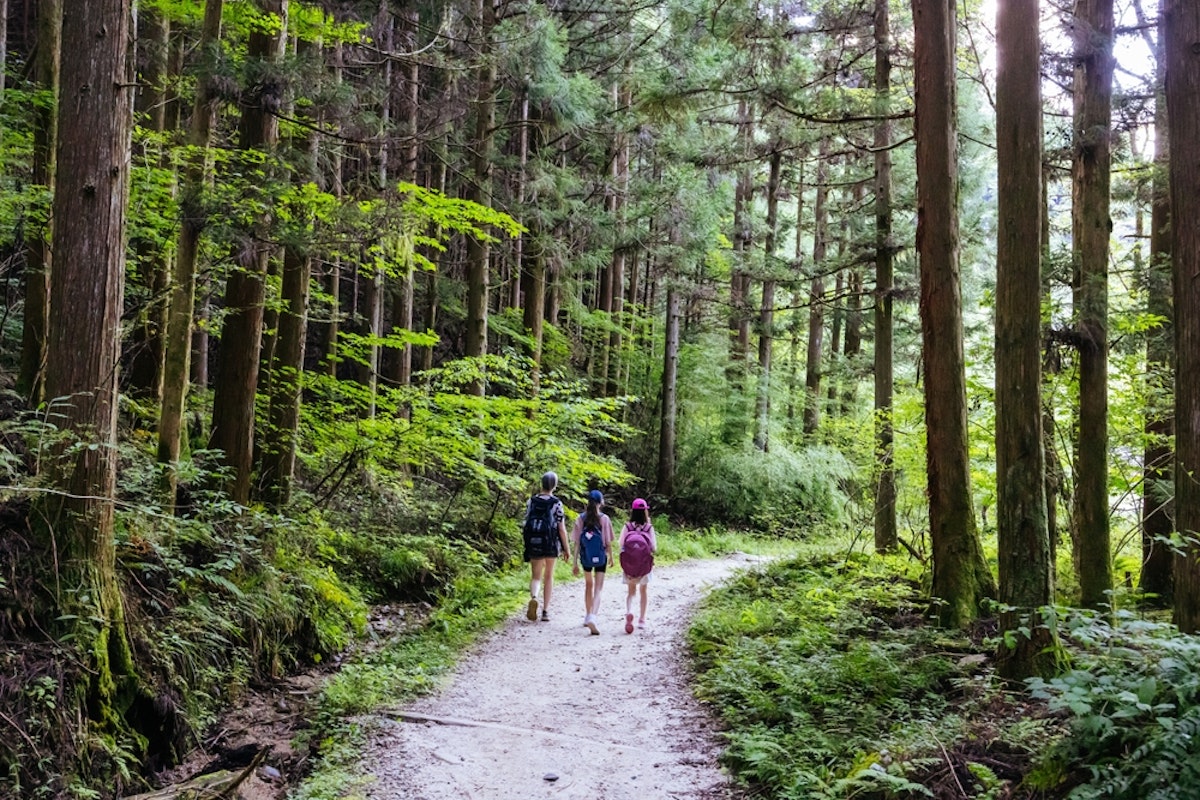
While Mount Fuji gets all the glory, Japan's hiking scene is incredibly diverse and rewarding beyond its most famous peak. From ancient pilgrimage routes to rugged alpine adventures, the country offers trails that showcase everything from pristine forests and hot springs to dramatic coastal views and sacred temples. Here's your guide to Japan's most spectacular hiking destinations that deserve a spot on every outdoor enthusiast's bucket list.
Mount Fuji attracts over 300,000 climbers annually during its short climbing season, creating overcrowded conditions that can detract from the spiritual and natural experience many seek. Japan's alternative hiking trails offer several compelling advantages: fewer crowds mean more peaceful experiences, longer hiking seasons extend your adventure opportunities, diverse ecosystems provide varied landscapes, and deeper cultural immersion connects you with local traditions and communities.
These hidden gems also tend to be more accessible year-round, unlike Mount Fuji's restrictive July-September climbing window. Many feature well-maintained trail systems, mountain huts, and local support infrastructure that rivals or exceeds what you'll find on Japan's most famous peak.
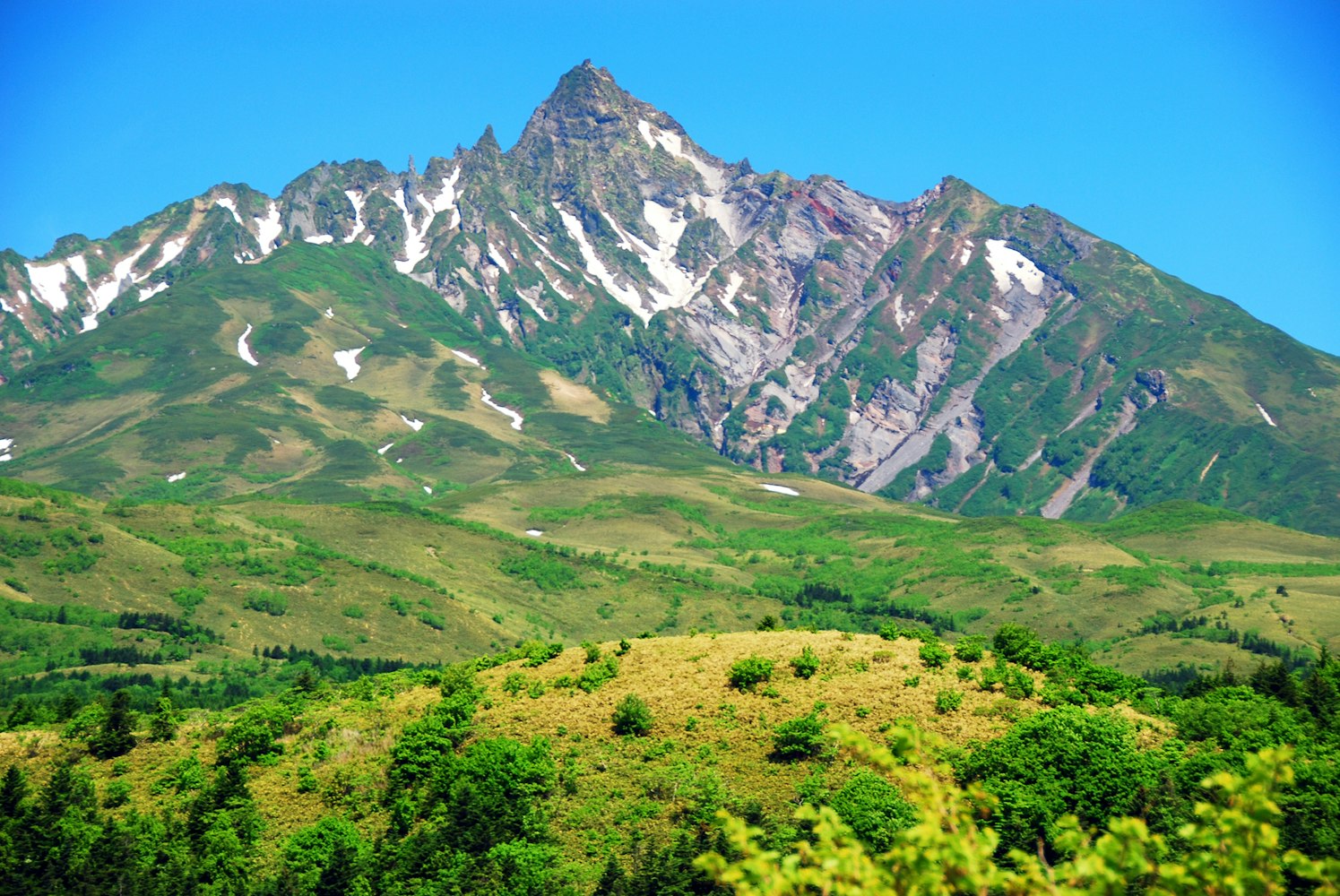
Rising dramatically from the Sea of Japan, Mount Rishiri presents one of Japan's most challenging and rewarding day hikes. This 1,721-meter volcanic peak on Rishiri Island offers a strenuous 10-12 hour round trip that tests even experienced hikers. The trail winds through pristine alpine meadows filled with rare wildflowers, including the endemic Rishiri poppy.
The climb begins in dense forests of Siberian pine and birch before emerging above treeline into a moonscape of volcanic rocks and scree. Weather conditions change rapidly, and the final summit push involves technical scrambling across loose volcanic debris. However, clear days reward hikers with 360-degree views encompassing the Rishiri coastline, neighboring Rebun Island, and the distant peaks of northern Honshu.
Best Time to Visit: July to September
Difficulty Level: Expert
Duration: 10-12 hours
Starting Point: Oshidomari Port
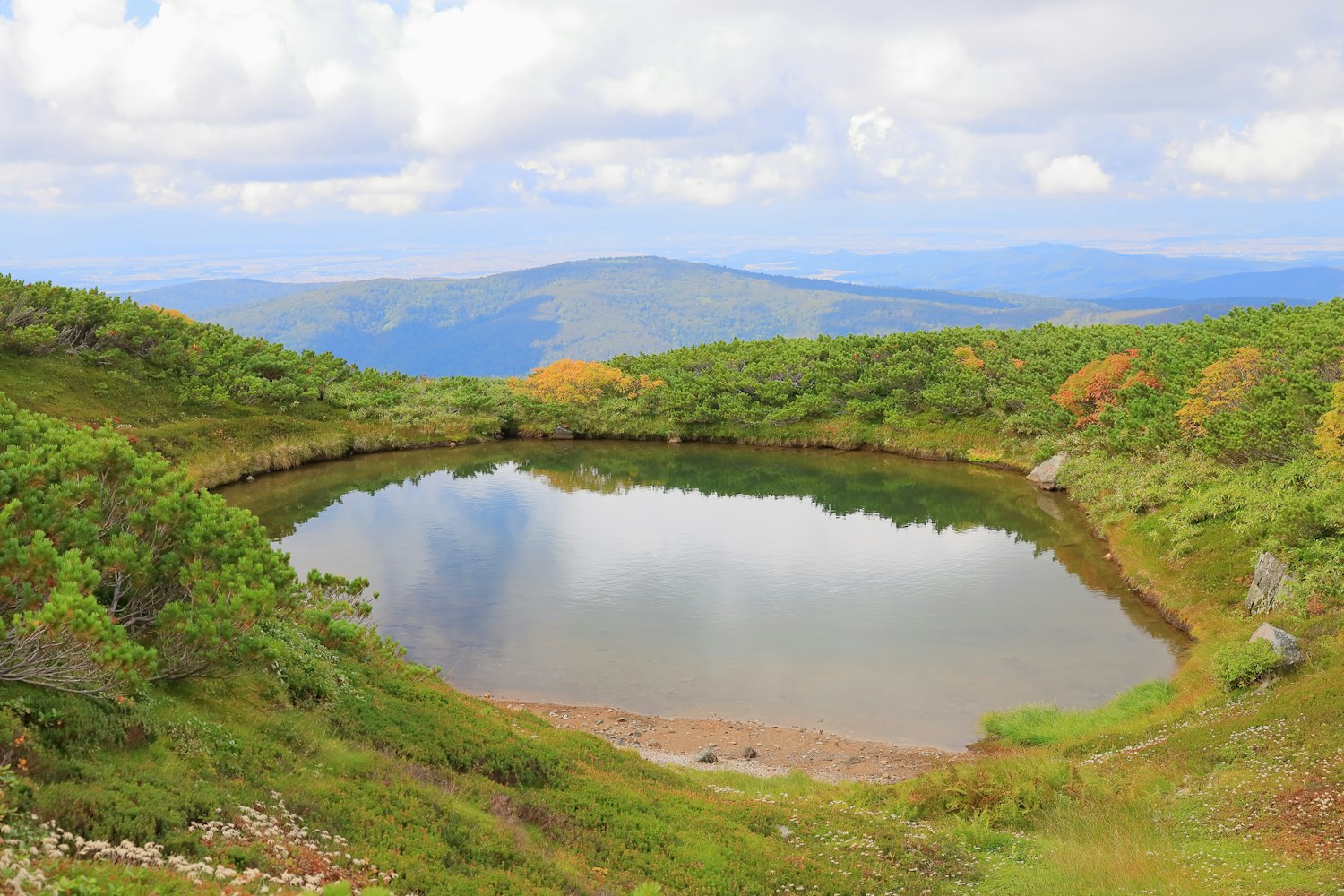
Japan's largest national park encompasses a vast wilderness of volcanic peaks, pristine lakes, and ancient forests. The park offers multiple hiking options, from gentle nature walks to challenging multi-day traverses across the Daisetsuzan mountain range.
The classic Daisetsuzan traverse covers approximately 50 kilometers over 4-6 days, connecting Mount Asahidake (Hokkaido's highest peak at 2,291 meters) with Mount Tokachidake through high alpine terrain. Hikers traverse volcanic landscapes, soak in natural hot springs, and experience some of Japan's most pristine wilderness. The route features well-spaced mountain huts and reliable water sources, making it ideal for backpackers seeking extended wilderness experiences.
For day hikers, the Mount Asahidake trail offers a more accessible option with cable car access, reducing the hiking distance to approximately 6 hours round trip. The trail showcases Hokkaido's unique flora, including fields of alpine wildflowers that bloom from late June through August.
Best Time to Visit: June to October
Difficulty Level: Moderate to Expert
Duration: 1-6 days depending on route
Starting Point: Asahidake Onsen

The Kumano Kodo represents a network of ancient pilgrimage routes crisscrossing the Kii Peninsula, designated as a UNESCO World Heritage Site. These sacred paths have been traveled for over 1,000 years by emperors, samurai, and common people seeking spiritual enlightenment at the Kumano Sanzan shrines.
Unlike typical mountain hiking, the Kumano Kodo combines moderate physical challenges with profound cultural and spiritual experiences. The trails wind through ancient cedar forests, past traditional villages, and alongside sacred waterfalls and hot springs. Stone markers and moss-covered statues line the paths, creating a mystical atmosphere that transport hikers back through centuries of Japanese history.
The most popular route, the Nakahechi, can be completed over 3-4 days with overnight stays in traditional ryokans or minshukus. The trail features relatively gentle grades suitable for intermediate hikers, with daily distances ranging from 10-20 kilometers. Highlight include the atmospheric Daimon-zaka approach to Nachi Falls and the challenging climb to Hongu Taisha shrine.
Best Time to Visit: March to November (avoid summer humidity)
Difficulty Level: Beginner to Intermediate
Duration: 1-7 days depending on route selection
Starting Point: Multiple access points including Takijiri-oji

Experience the beauty and spirituality of the Kumano Kodo pilgrimage route on a 2-day walking tour.
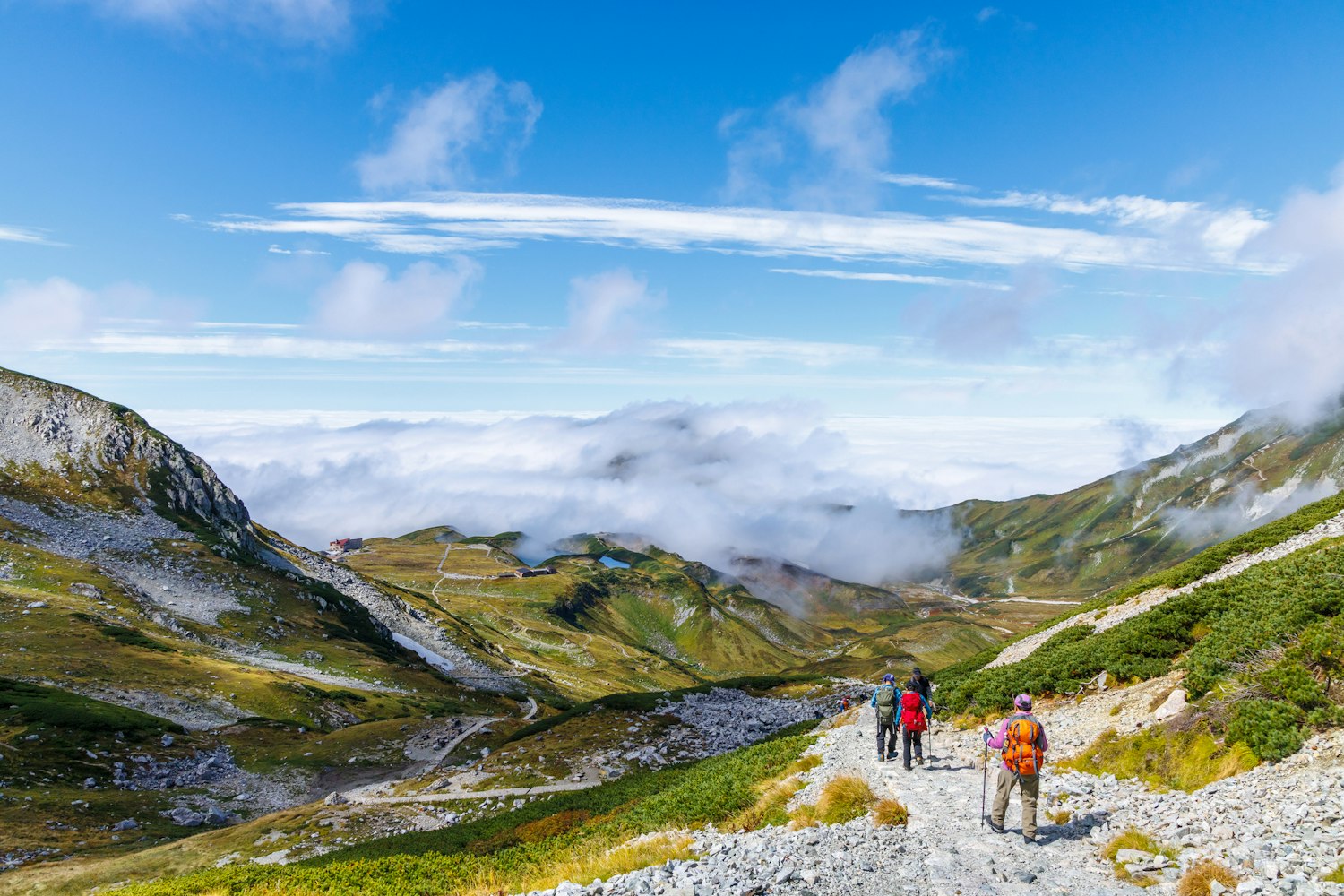
The Northern Japanese Alps offer some of the country's most spectacular high-altitude hiking, with the Tateyama Kurobe Alpine Route providing access to pristine alpine environments typically reserved for serious mountaineers. This engineering marvel combines multiple transportation methods—cable cars, buses, and trolleys—to transport visitors into the heart of the Alps.
The classic Alpine Route traverse begins at Tateyama Station and concludes at Ogizawa, crossing the dramatic Kurobe Dam and traversing high alpine plateaus. Hiking options range from short walks around alpine lakes to challenging climbs of 3,000-meter peaks like Mount Tateyama and Mount Tsurugi.
The Murodo area serves as an excellent base for day hiking, with trails leading to emerald alpine lakes, steaming volcanic vents, and panoramic viewpoints overlooking the Kurobe Valley. The famous "Snow Corridor" along the Tateyama Kurobe Alpine Route creates towering walls of snow up to 20 meters high, typically lasting from April through June.
Best Time to Visit: April to November
Difficulty Level: Beginner to Expert depending on route
Duration: 1-3 days
Starting Point: Tateyama Station or Ogizawa

Mount Yari, known as Japan's Matterhorn for its distinctive pointed summit, presents one of the country's most technically challenging and visually striking climbs. Rising 3,180 meters in the Northern Alps, Yari-ga-take requires advanced hiking skills and proper equipment for the final summit approach.
The standard route from Kamikochi involves a 2-3 day approach through spectacular alpine valleys, past pristine mountain lakes, and across high ridges with commanding views of surrounding 3,000-meter peaks. The final summit pyramid requires basic rock climbing skills and a head for heights, as the last 20 meters involve exposed scrambling with significant drop-offs.
Experienced hikers often combine Mount Yari with other Northern Alps peaks in extended traverses lasting 5-7 days. These routes showcase the full diversity of Japanese alpine environments, from dense forests and alpine meadows to barren volcanic landscapes and pristine glacial valleys.
Best Time to Visit: July to September
Difficulty Level: Expert
Duration: 2-7 days
Starting Point: Kamikochi
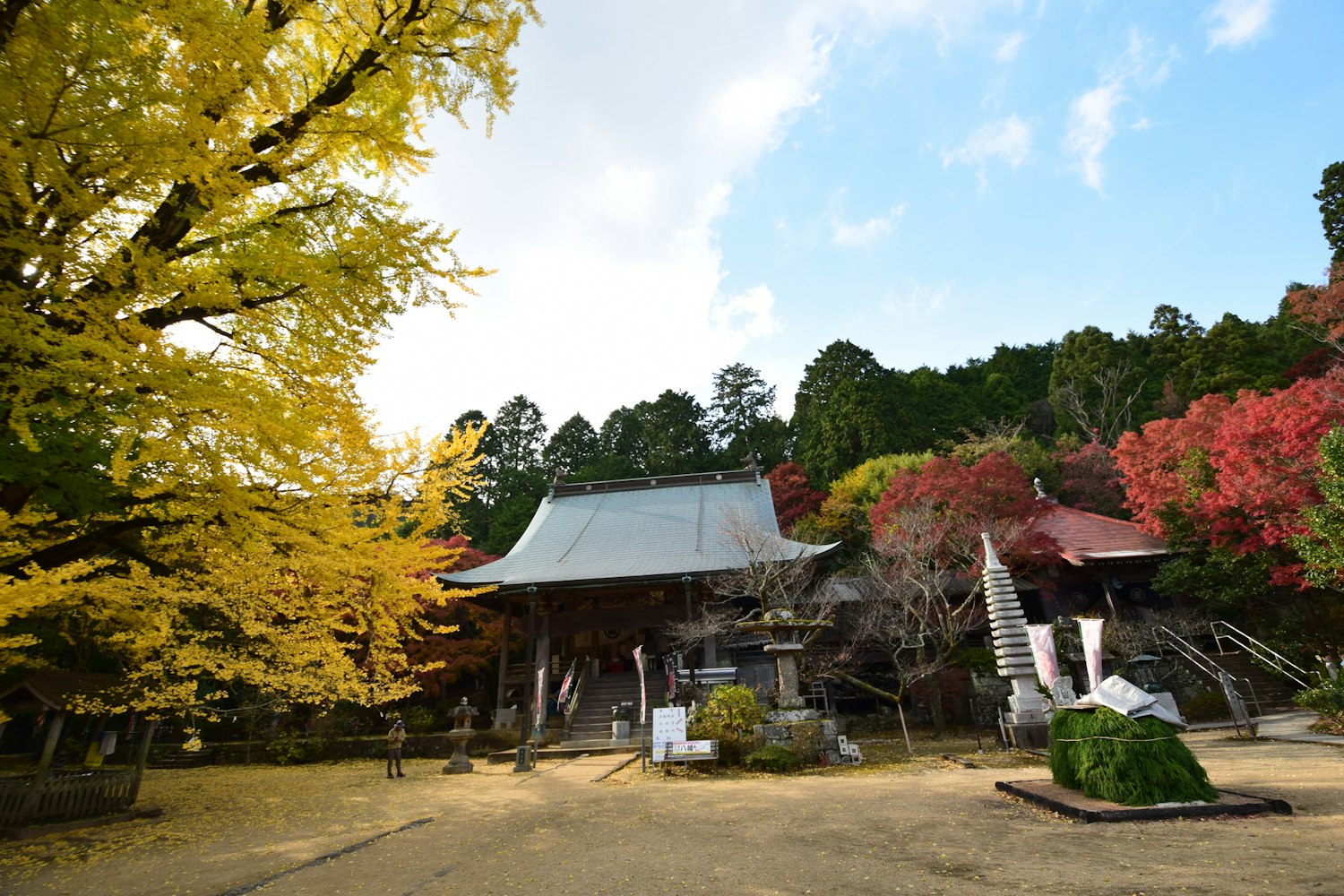
Mount Daisen in Tottori Prefecture offers one of western Japan's most rewarding hiking experiences, combining moderate physical challenges with rich cultural history and stunning natural beauty. This 1,729-meter volcanic peak has been considered sacred for over 1,300 years and features an active monastery and pilgrimage traditions.
The main hiking trail follows the historic pilgrimage route, beginning at Daisenji Temple and ascending through ancient forests of beech and oak. The path features numerous shrines, stone lanterns, and traditional way stations that provided rest for pilgrims throughout the centuries. The final approach opens into alpine meadows with commanding views across the Chugoku Mountains and toward the Sea of Japan.
Mount Daisen's accessibility makes it ideal for hiking throughout most of the year, with spring cherry blossoms, summer wildflowers, spectacular autumn foliage, and occasional winter snow creating four distinct seasonal experiences. The mountain's western slope offers gentler grades suitable for families and casual hikers, while the eastern routes provide more challenging terrain for experienced adventurers.
Best Time to Visit: April to November
Difficulty Level: Beginner to Intermediate
Duration: 4-8 hours
Starting Point: Daisenji Temple
![1st Ryozen Temple Tahoto (88 places in Shikoku) 1st Ryozen Temple Tahoto [88 places in Shikoku]](https://www.datocms-assets.com/101439/1756695436-1st-ryozen-temple-tahoto-88-places-in-shikoku.jpg?auto=format&h=1000&w=2000)
The Shikoku Pilgrimage represents Japan's most famous walking pilgrimage, covering approximately 1,400 kilometers around the island of Shikoku while visiting 88 Buddhist temples. While the complete pilgrimage typically requires 45-60 days, hikers can experience meaningful sections that showcase Shikoku's diverse landscapes and spiritual traditions.
Popular hiking sections include the mountainous terrain between Temple 11 (Fujiidera) and Temple 12 (Shosanji), known as one of the pilgrimage's most challenging segments. This route crosses the 1,955-meter Mount Tsurugi through dense forests and alpine meadows, requiring proper hiking equipment and navigation skills.
The pilgrimage combines physical challenges with cultural immersion, as hikers encounter traditional villages, ancient temples, and local people who maintain centuries-old traditions of supporting pilgrims. Modern pilgrims can choose from various accommodation options, from temple lodging and traditional ryokans to camping and mountain huts.
Best Time to Visit: March to November
Difficulty Level: Beginner to Intermediate
Duration: 1-60 days depending on section
Starting Point: Any of the 88 temples
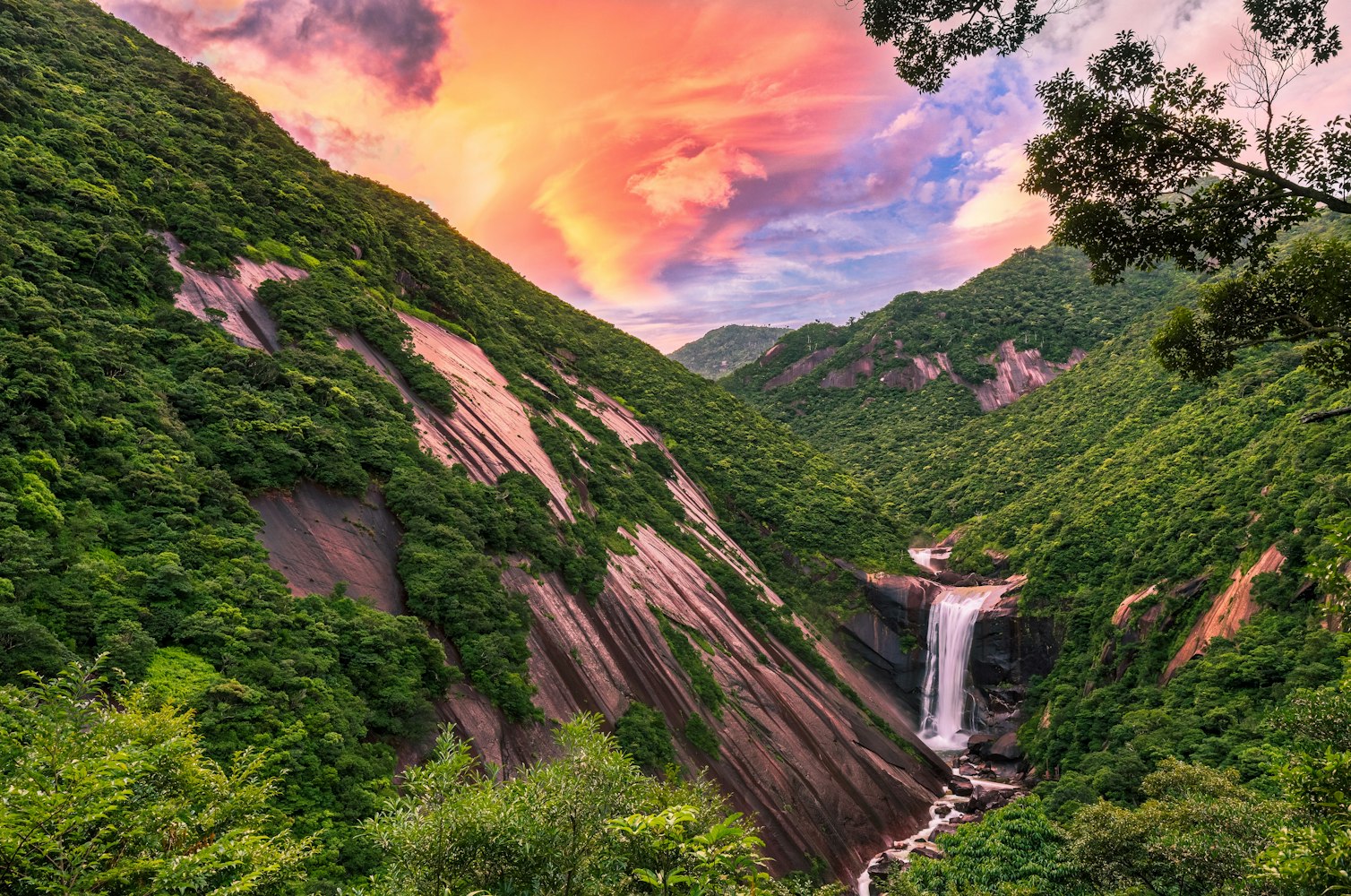
Yakushima Island, a UNESCO World Heritage Site located south of Kyushu, harbors some of Japan's most pristine ancient forests and unique hiking opportunities. The island's diverse ecosystems range from subtropical coastlines to alpine environments, all within a compact area easily explored over several days.
The island's most famous hike leads to Jomon Sugi, a massive cedar tree estimated to be between 2,000-7,000 years old. The challenging 10-hour round trip follows an abandoned railway line for the first half before climbing steeply through increasingly ancient forests. The final section navigates wooden walkways designed to protect the forest floor, culminating at the magnificent Jomon Sugi.
Alternative routes explore other aspects of Yakushima's diverse environments, including the Wilson Stump hike to a massive hollow cedar stump, the Shiratani Unsuikyo forest walk through moss-covered temperate rainforest, and coastal hikes featuring dramatic volcanic landscapes and hot springs accessible only on foot.
Best Time to Visit: April to November (expect frequent rain)
Difficulty Level: Beginner to Intermediate
Duration: 4-10 hours depending on route
Starting Point: Various trailheads around the island
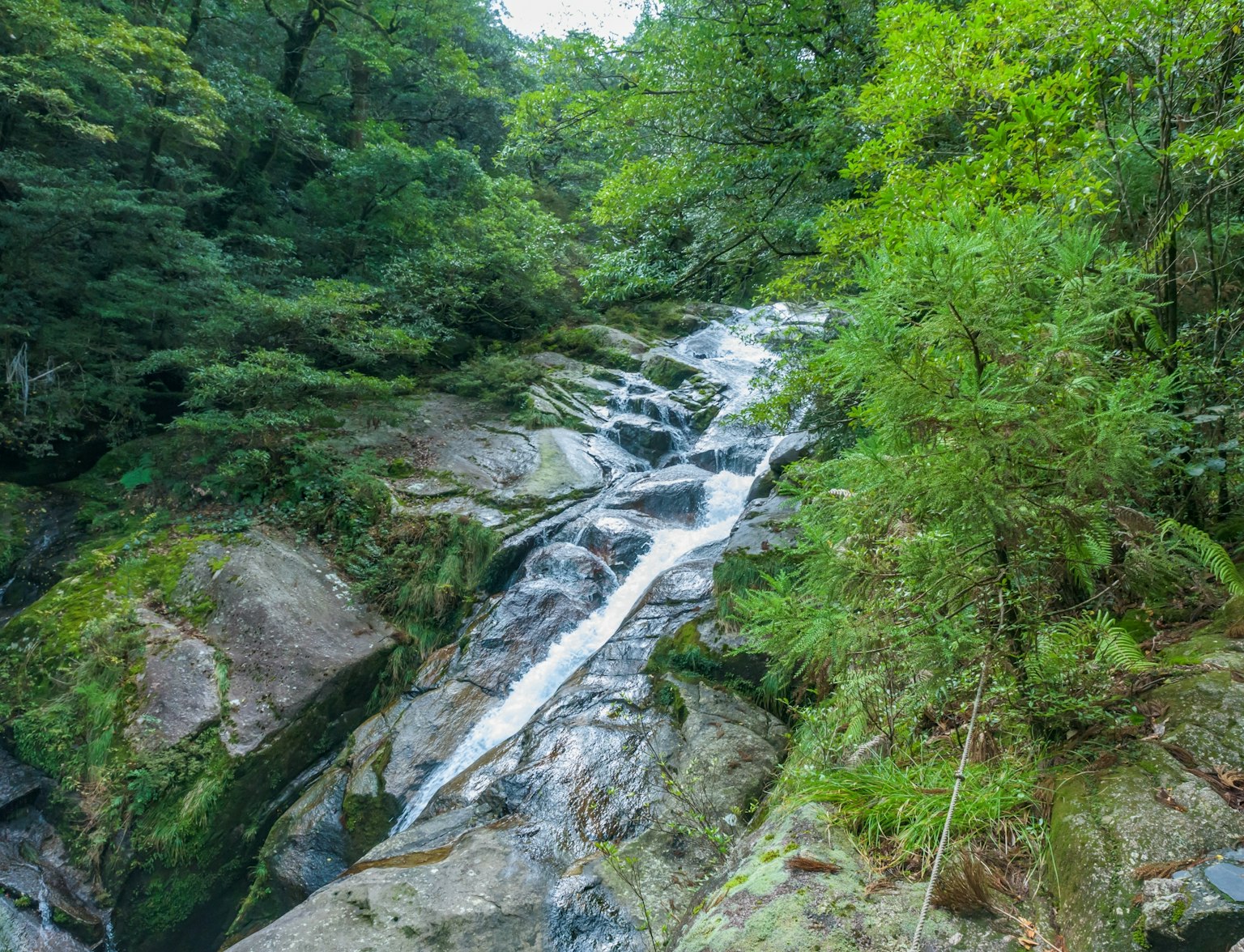
Embark on a personal journey through Yakushima's untamed wilderness.

Mount Aso in Kumamoto Prefecture offers the unique experience of hiking within one of the world's largest active volcanic calderas. The Aso caldera spans 25 kilometers north-south and 18 kilometers east-west, containing multiple volcanic peaks, grasslands, and traditional farming communities.
The classic Mount Aso hike ascends Mount Takadake (1,592 meters), the caldera's highest peak, providing panoramic views across the entire volcanic complex. The trail begins in rolling grasslands dotted with grazing cattle before climbing through volcanic landscapes to rocky summit ridges. Clear days offer views extending to Mount Kuju and across Kyushu's central highlands.
Active volcanic conditions occasionally restrict access to certain areas, particularly around the currently active Nakadake crater. However, the caldera offers numerous alternative hiking routes, including the gentle Kusasenri grasslands walk and challenging climbs of Mount Kishima and Mount Eboshi.
Best Time to Visit: March to November
Difficulty Level: Beginner to Intermediate
Duration: 3-8 hours
Starting Point: Aso Station area

Japanese hiking trails feature comprehensive marking systems, but understanding these systems prevents confusion and ensures safe navigation. Most trails use colored ribbons, painted markers, and wooden signs with Japanese characters indicating directions, distances, and estimated hiking times.
Download offline maps and GPS applications before departing, as cellular coverage can be unreliable in mountainous areas. Popular applications include YAMAP (available in Japanese) and international options like Maps.me or AllTrails. Many trails also feature detailed topographic maps at trailheads showing elevation profiles, key landmarks, and emergency contact information.
Trail maintenance in Japan follows high standards, but weather conditions can create temporary hazards like fallen trees, washed-out bridges, or unstable trail surfaces. Check local conditions and weather forecasts before departing, and inform someone of your planned route and expected return time.
Japan's mountain accommodation infrastructure rivals anywhere in the world, offering options from basic camping to luxury mountain lodges. Mountain huts (yamagoya) provide affordable dormitory-style accommodation with basic meals, typically costing 5,000-8,000 yen per night including dinner and breakfast.
Many trails feature strategically placed huts, allowing multi-day treks without carrying full camping gear. Reservations are often required, particularly during peak seasons and weekends. Some huts offer equipment rental, resupply services, and detailed local trail information.
Traditional ryokans near trailheads provide comfortable accommodation with elaborate meals, hot spring baths, and cultural experiences. These establishments often arrange trail transportation, luggage forwarding, and local guide services.
Japan offers incredible hiking beyond Mount Fuji. These trails give you mountain views, cultural experiences, and natural beauty without the crowds of the famous peak. Each trail is different. You can walk ancient pilgrimage routes, explore alpine valleys, or hike through magical forests. Some take a few hours, others need several days. All show you a side of Japan most tourists miss.
The best part? Japan makes hiking easy. Good transportation, mountain huts, and well-marked trails mean you can focus on enjoying the experience. Whether you want a challenging mountain climb or a peaceful forest walk, these trails deliver something special.
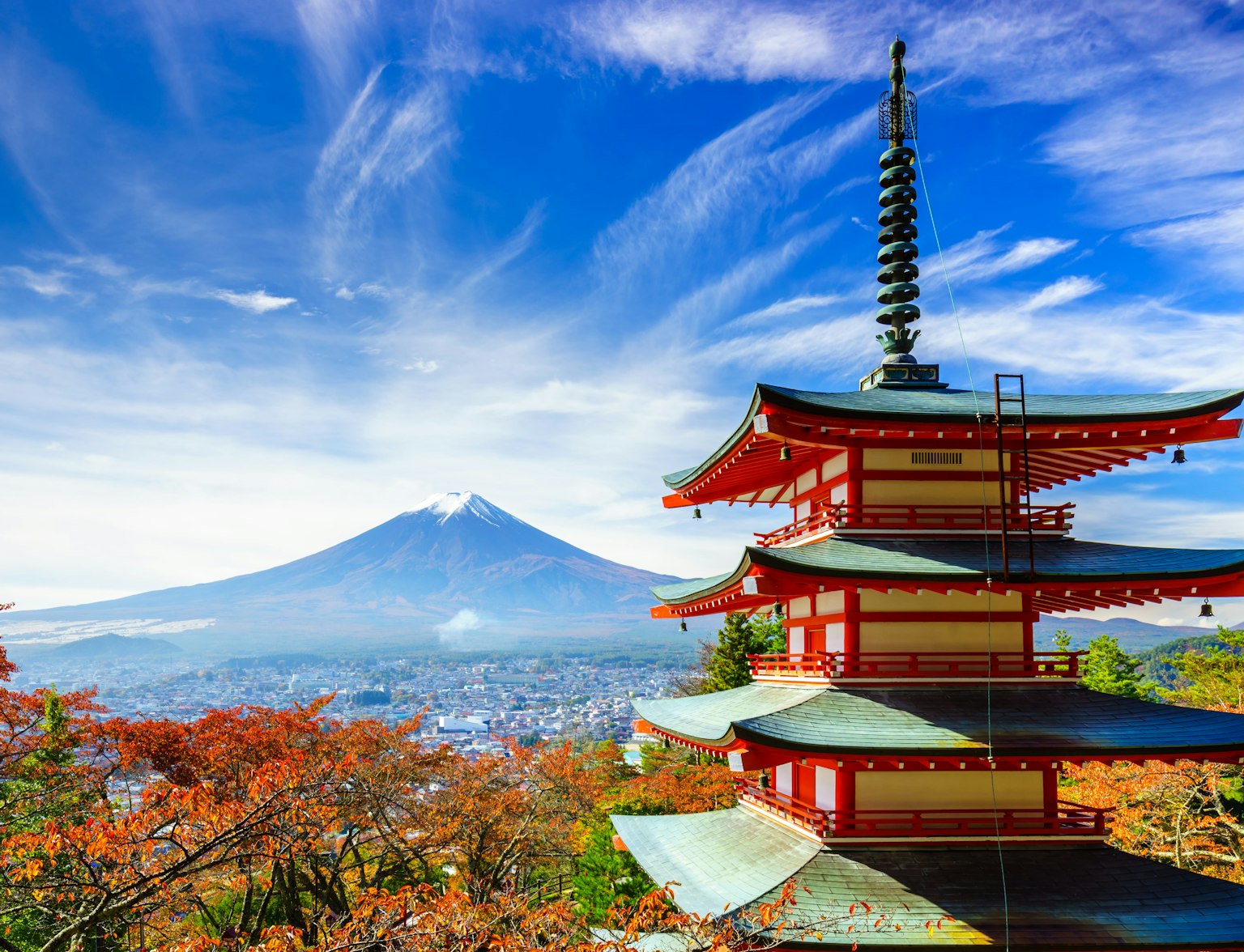
Discover Japan without limits with our all-access JR Pass!
